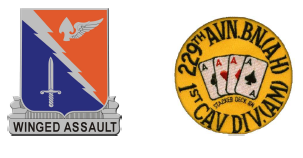BW Perform a VMC take-off
Basic Wings requirement: Task_1040 - PERFORM VISUAL METEOROLOGICAL CONDITIONS TAKEOFF
Contents
- 1 5. Basic Wings – Perform a VMC take-off
- 1.1 5.1. Objective: Perform a visual meteorological conditions take-off as per 1040 UH-1h ATM 2007
- 1.2 5.2. Competencies expected: The pilot will demonstrate
- 1.3 5.2.1. from a hover, smoothly accelerate the aircraft through ETL whilst maintaining an appropriate hover height and desired ground track relative to the conditions
- 1.4 5.2.2. obtaining and maintaining the desired climb speed (70kts) and rate of climb
5. Basic Wings – Perform a VMC take-off
5.1. Objective: Perform a visual meteorological conditions take-off as per 1040 UH-1h ATM 2007
STANDARDS:
1. Maintain takeoff heading ± 10 degrees below 50 feet above ground level (AGL).
2. Maintain desired ground track.
3. Maintain aircraft in trim above 50 feet AGL or as appropriate for transition to terrain flight.
5.2. Competencies expected: The pilot will demonstrate
Determine the direction of takeoff by analyzing the tactical situation, the wind, the long axis of the takeoff area, and the lowest obstacles.
Determine if Takeoff is from the ground or from a hover
Performing this maneuver in certain environments may require hover OGE power.
Confirm that required power is available by comparing the information from the performance planning card (PPC) to the hover power check.
5.2.1. from a hover, smoothly accelerate the aircraft through ETL whilst maintaining an appropriate hover height and desired ground track relative to the conditions
Adjust the cyclic as necessary (approximately 5 degrees nose down), obtain the desired climb airspeed, and maintain the desired ground track.
Avoid unnecessary nose-low accelerative attitudes. Do not exceed 10 degrees nose down.
Maintain heading with pedals and apply forward cyclic as required to smoothly accelerate through Effective Transitional Lift .
Note: ETL(16-24 kts)refers to the increased Rotor efficiency which results from outrunning the vortices, increased AoA, and increased Tail Rotor Effectiveness. The increase in airspeed leads to Disymetry of Lift resulting in compensatory blade flapping which brings the nose up: "Blow Back" The pilot needs to counter this with smooth measured forward cyclic. (avoid > 10* nose down) Other considerations during this critical phase of flight are Transverse Flow Effect(@10kts) resulting in Right Roll and improved Tail Rotor Effectiveness leading to Left Yaw, both of which require countering control inputs.
5.2.2. obtaining and maintaining the desired climb speed (70kts) and rate of climb
For training, recommended climb airspeed is 70 KIAS with a rate of climb of 500 FPM.
Maintain heading with the pedals when below 50 feet AGL or until transitioning to terrain flight; Maintain Track and aircraft in trim above 50 feet AGL
NIGHT OR NIGHT VISION CONSIDERATIONS:
If visibility compromised, perform an altitude-over-airspeed takeoff
Apply Takeoff Power first followed by a slow acceleration to ensure obstacle clearance.
Maintain Takeoff Power until 10 knots prior to reaching climb airspeed.
Use of the white light will impair Night Vision several minutes. (caution if resuming flight before reaching full dark adaptation).
SNOW/SAND/DUST CONSIDERATIONS:
Ascend vertically. As the aircraft clears the snow/sand/dust cloud and clears the barriers, accelerate to climb airspeed.
Applying the collective to blow away loose snow/sand/dust may be beneficial before performing this maneuver.
At night, use of the landing, search, or anti-collision lights may cause spatial disorientation. Be prepared to transition to instruments and execute an instrument takeoff if ground reference is lost.
CONFINED AREA CONSIDERATIONS:
Reposition the aircraft to afford a shallower departure angle and minimize power requirements.
MOUNTAIN/PINNACLE/RIDGE LINE CONSIDERATIONS:
Perform a hover power check. Determine the best takeoff direction and path for conditions. Wind Obstacles Density Altitude.
Where drop-offs are located along the takeoff path, the aircraft may be maneuvered down slope to gain airspeed.
MUD/MUSKEG/TUNDRA CONSIDERATIONS:
In wet areas where the aircraft is likely to have sunk or is stuck in the mud, get light on skids, nose down slightly, oscillate pedals to break the suction of the wheels/skis and "swim out".
It is important to understand dynamic rollover characteristics.
